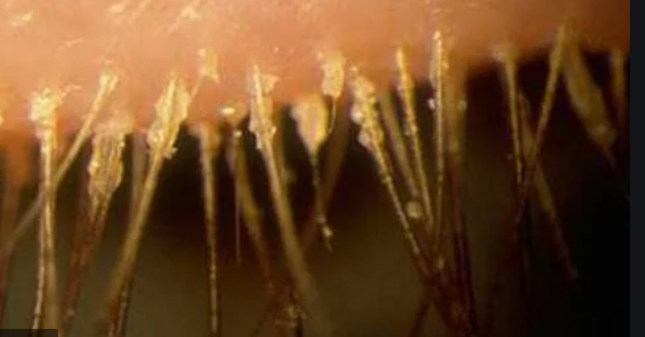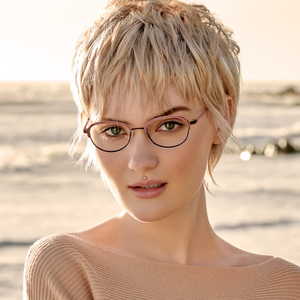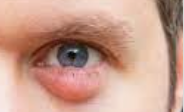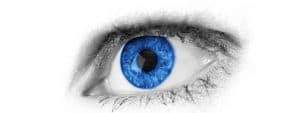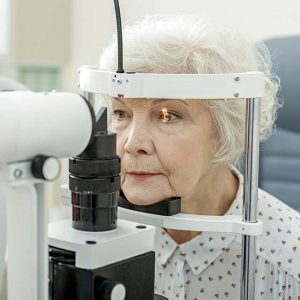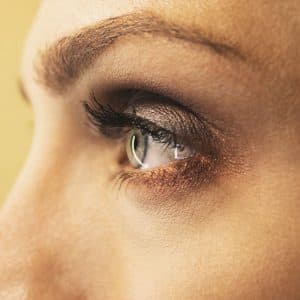Blepharitis is a common eyelid condition that affects up to 47% of all adults.
Blepharitis is an eyelid inflammation, which causes red, swollen eyelids and crusty eyelashes. The condition can be difficult to treat and tends to recur, which is why it’s also known as chronic blepharitis.
Blepharitis can be painful and uncomfortable. Unfortunately, this condition isn’t always preventable, but there are ways to reduce your risk of inflammation.
According to a survey conducted by The Ocular Surface (2009), U.S. eye doctors reported that between 37% and 47% of their patients had some degree of blepharitis.
Blepharitis isn’t contagious and usually doesn’t cause serious harm to your vision or eyes, but it can feel uncomfortable, but it is important not to just think you have dry eyes.
Types of blepharitis
There are two types of blepharitis – anterior blepharitis and posterior blepharitis.
- Anterior blepharitis affects the eyelashes on the outside front edge of the eyelid.
- Posterior blepharitis affects the inner edge of the eyelid that touches the eye.
What causes blepharitis?
The main cause of blepharitis is the presence of dermodex in your eyelids, this is a type of mite that feeds on dead skin cells.
Blepharitis can be caused by:
- Dry eyes
- Bacterial eyelid infection
- Fungal eyelid infection
- Meibomian gland dysfunction
- Parasites (eyelash lice or eyelash mites)
- Seborrheic dermatitis (dandruff of the eyebrows and scalp)
Blepharitis is also associated with skin conditions such as ocular rosacea, dandruff, eczema and psoriasis.
Symptoms of blepharitis
The most common symptoms of blepharitis are:
- Burning, red, or stinging eyes
- Crusty yellowy debris at the base of the eyelashes
- Grittiness
- Blurry vision that typically improves with frequent blinking
- Itchy eyes and eyelids
- Sensitivity to light
- Swollen, red eyelids
- Watery eyes
Schedule an appointment with an eye doctor near you who can diagnose and treat your blepharitis.
SEE RELATED: What is Chalazion?
Conditions associated with blepharitis
If you have chronic blepharitis, you may have one or more associated conditions or complications, such as:
- Chalazion – a clogged oil gland in an eyelid that may begin as a stye, causing a red, swollen bump on the eyelid.
- Dry eye syndrome – DES caused by clogged oil glands in the eyelid make the tear film evaporate quickly.
- Stye – a bacterial infection at the base of an eyelash or inside an oil-producing gland in the eyelid that causes a painful red bump at the edge of an eyelid.
- Eyelid problems – Chronic blepharitis can result in scarring along the edge of the eyelid, causing misdirected eyelashes or even eyelash loss.
- Corneal abrasion – If blepharitis causes your eyelashes to grow inwards, they might rub against the clear front surface of your eye, causing a painful corneal abrasion.
- Pink eye – Chronic blepharitis can also lead to bacterial pink eye, a type of conjunctivitis. When pink eye and blepharitis occur simultaneously it’s called blepharo-conjunctivitis.
How to treat blepharitis
There are various ways you can help reduce your risk of developing this condition or at least control the symptoms, including:
Warm compresses
Wet a clean washcloth with warm water and place it over your closed eyes for at least 1 minute. This helps loosen the flakes that stick to your eyelashes. It also helps prevent nearby oil glands from clogging.
Eye drops
Steroid eye drops or artificial tears may reduce redness, swelling and dry eye. Your eye doctor might prescribe an antibiotic eye drop to help the oil glands work better.
Antibiotics
Your eye doctor may recommend you use an antibiotic ointment on your eyes. Place a small amount of ointment on a clean fingertip or cotton swab. Gently apply the ointment to the base of your eyelashes. Your doctor might also prescribe oral antibiotic medicine.
Eyelid scrubs
Dilute no-sting baby shampoo in warm water and soak a clean washcloth, cotton swab applicator, or lint-free pad in it. Gently clean the roots of your eyelashes, then scrub for 15 seconds.
Skin and eyelid hygiene
It is very important to keep your skin, hair and eyelids clean. This will help keep your blepharitis symptoms under control. Carefully wash your eyelashes every day with no-sting baby shampoo diluted in warm water. Also, wash your scalp, hair and eyebrows with an antibacterial shampoo.
Blepharitis can be painful and uncomfortable, so if you notice your eyelids are red, swollen or painful, the cause might be the small dermodex mite, it’s recommended to have your eyelids examined by an eye doctor.
LEARN MORE: Guide to Eye Conditions
Contact an eye doctor near you to check your eyelids for any inflammation and to receive the optimum treatment.

